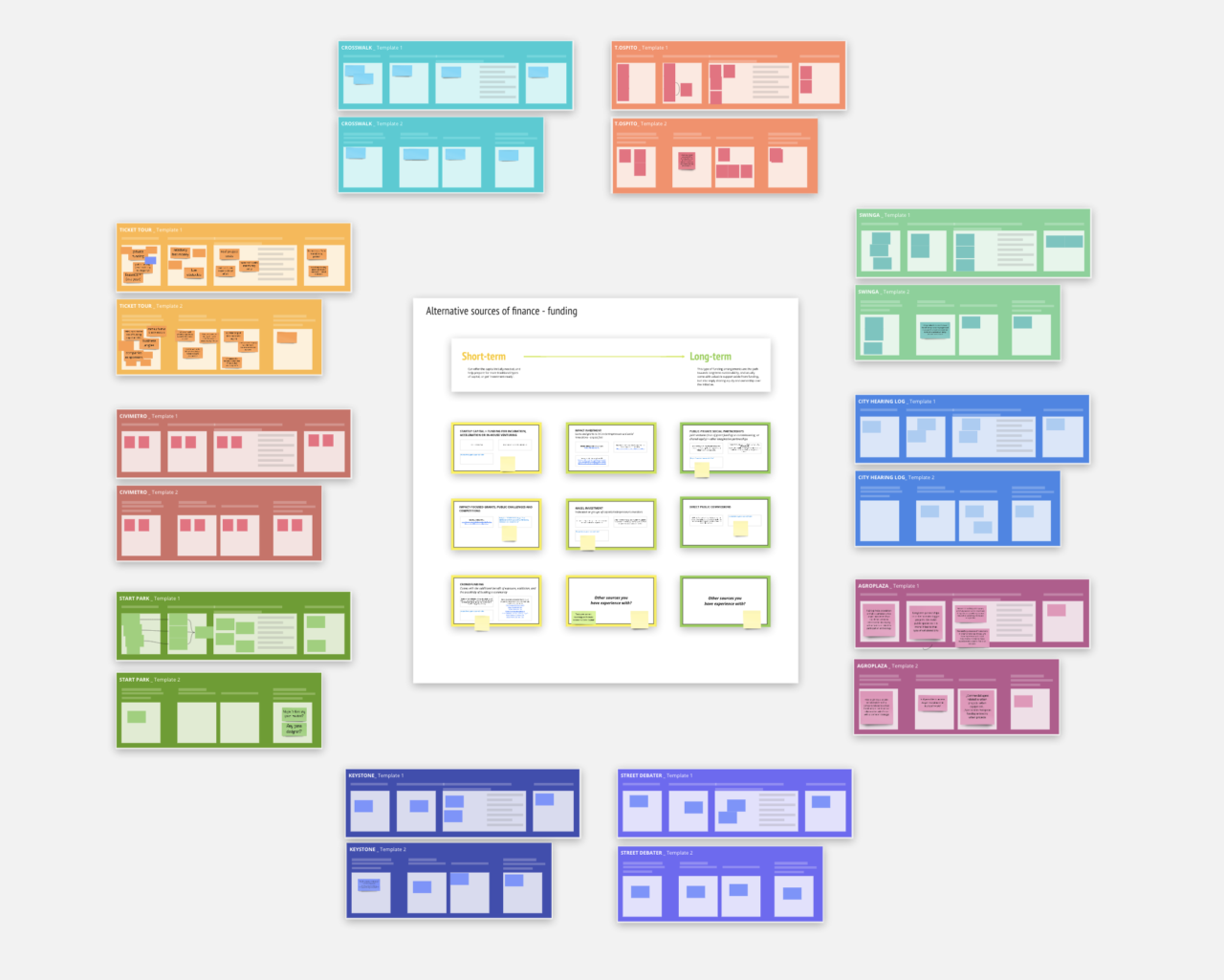How to finance mission-driven initiatives?
A Community Talks with experts and DESIGNSCAPES innovators
For mission-oriented initiatives tackling societal challenges, it can be difficult to show how they generate economic value. This creates a challenge for becoming financially sustainable and attracting funding to grow and scale. What should be considered when identifying strategies for mission-driven initiatives to become financially sustainable? What tools and strategies can help value-driven innovators in encouraging institutions to invest in their projects?
These and other questions concern many of the urban innovation initiatives selected in DESIGNSCAPES’s 3rd Open Call on Scaling. To address them, the PCM Lab Team organized a two-session module to help initiatives reflect and learn about financial sustainability strategies and alternative funding options for their mission-driven ventures. In line with the approach of the PCM Lab, centered on co-creation and collaborative learning principles, the team set up two ‘Community Talks’ where initiatives would be nudged to reflect on and share their experiences with financial tools and strategies, together with experts on the topic, to ultimately elaborate possible strategies applicable to their projects.

What characteristics of your initiatives are important to consider when choosing a financial strategy?
The first Community Talk started off with an overview from PCM Lab researcher Alicia Calderon Gonzalez on alternative financial strategies; ranging from short-term funding, to more long-term ones. The turn was then for each team to think about which financial strategies may fit their initiatives, and which aspects of their projects may be key in this decision. These reflections led to an active group discussion, where initiatives shared their answers and experiences, and thought together about possible next steps for their projects.

Discussing key aspects of financial sustainability
Out of the key questions that the teams of innovators raised during their discussions in the first session, the Lab team structured a second Community Talk. For this occasion, the DESIGNSCAPES community was joined by four international guests from the social innovation and entrepreneurial sector: Joachim Kleim from Coompanion (Sweden), project coordinator Jean-François Alberghi from the inclusive incubator Asociacion Con Valores (Spain), project manager Cecilia Colombo from Kilowatt (Italy) and Irene Conversano, service designer at Butterflyworks (Netherlands).
The guests joined the DESIGNSCAPES initiatives in a round-table discussion, where they dove deeper into key aspects, tips and possible strategies with financing projects from their perspective and experiences. The following are the main takeaways, that emerged from this rich discussion:
Choosing a governance model
As many initiatives are created around a project, even after having produced a prototype, the team may not have a governance model. However, choosing one is key to secure investments and work together with other stakeholders. When choosing a governance model, it is important to know what type of investors one is looking for. But even more importantly, a good governance model should be tailored to the project and change over time, as one initiative develops and grows.
Crowdfunding as financial strategy
Crowdfunding can be a strategic tool for engaging a larger public, but it’s important to consider time and money to start the campaign. Many attempts may fail, but there is great value in looking at failed attempts and learning from them when putting together a crowdfunding campaign.
Attracting angel investors
“Be always aware of the risk that also investors are taking in supporting you”, as one of the guests nicely pointed out. Many initiatives are very good at describing the value they are bringing to society, but not so at describing the financial viability of the project; having a very clear and effective message regarding the latter is instrumental to attracting angel investors.
Undergoing start-up incubation processes
A way to gather both funding and organizational learnings is through start-up accelerators or incubation programs. As our guests reminded the initiatives, these organisations and programs focus specifically on building the necessary skills to continue with the projects on their own legs, to become an entrepreneur and to build a network or community that can help sustain the project.
Establishing partnerships
Finding financial partners is fundamental, and one thing keep in mind is that whether a stakeholder choses to partner with you or not, it comes down to “WHY you are staying up day and night”;investments are on people and on teams, before projects and ideas.
Impact investments
Last but not least, in our round table we touched upon impact investors and how initiatives could validate and show the social impact of their projects to other stakeholders. Here, our guests brought up some strategic tools they are experienced with, such as Social Impact Evaluation and Theory of Change. These are tools that really help with planning processes focusing on the social change one wants to generate, and then build your path to reach it.
Over these two sessions we tried to learn more about financial strategies for value driven initiatives together with the DESIGNSCAPES initiatives and expert guests. We tried to leverage their collective knowledge on dealing with the complex challenge of financing social initiatives. As a result, we have unveiled insights, challenges, and tips that we hope will be useful not only for our DESIGNSCAPES community but also to other projects and teams working towards social impact.